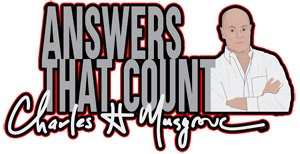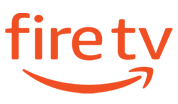The economic impact on America from Covid-19 is unprecedented in modern times. The forced shut down of many businesses led to unemployment numbers exceeding the great depression numbers (+20% unemployment reached in 2020). Single-day job loss and many other economic measurements have set bad records for the US. Is massive inflation next?
To aid the businesses impacted by COVID-19 and to replace lost wages to employees, the government has injected unprecedented amounts of money into the economy. Much of the funding was through the CARES Act and the PPP loans. Other funding went directly to taxpayers and to unemployment benefits. Close to $4 trillion dollars will have been injected into the economy and the Federal Reserve will have cut rates to near 0%.
Just to think back to the beginning of 2020 when unemployment rates were at an all-time low, employment rates at an all-time high, the economy roaring and the economy booming. All of that hope and optimism hit the wall and did a 180 degree turn with the pandemic of COVID-19. Now concern shifts to questions about the recovery, the re-build, when recovery happens, impact of inflation, changes in taxes, the return of COVID and much more.
The Outlook from Professor Joe Calhoun, Economics Professor at FSU
The fist interview with FSU Professor Joe Calhoun was published on March 23 at the time the lock downs were just beginning. At the time this was recorded, FSU was on Spring Break and had not made the decision to move to a virtual, on-line delivery method for the rest of the semester.
The follow-up interview with FSU Professor Joe Calhoun recorded on April 24, 2020.
One of the big questions to address is will all of this economic carnage and money creation lead to inflation? The short answer is, it could. But, to help with a more seasoned and practical response to that question, we turn to the good Professor for his take on the situation and the likely outcome.
Money Basics from the Professor
Before we get to the main question, Professor Joe provides a few definitions to terms kicked around in economic discussions. Here is the review of those terms.
Creating money – comes from the Federal Reserve and the Banking process and does not come from printing new money. The Fed issues bonds into the banking system, which results in additional money being created into the system. Required reserves allow for creating money without printing new money. Bank to bank deposits and withdrawals allows for the creation of more money into the economy. What we have done with the recent COVID stimulation is money creation, not printing new money.
Printing money comes from the Bureau of Printing and Engraving. This is the process of printing new money.
Federal Reserve System, referred to as the Fed is independent to the US Government. It does not receive funding from the US Government. It generates its own revenues and covers its own expenses. The Fed also sets the fed rates that are used throughout the banking system.
SBA is intermediary institution to manage the distribution of money to banks and consumers
Treasury is an official US Agency. It is responsible to make sure that the US Government has the money it needs to operate.
Is Inflation Around the Corner?
The fear of all this money creation, is that we will have run-away inflation. Inflation is a calculation based on the CPI which is done on a monthly basis. If the index increases month to month, it provides a measure of inflation. If money supply increases at a greater rate than supply of goods and services (measured by GDP), then inflation becomes a concern.
The Fed, Congress and the Executive Branch has a few tools it can use to combat inflation.
The Federal Reserve lowers interest rates to stimulate spending and growth. As activity increases and gets to a point of too much growth the Fed will raise rates to slow growth and effects of inflation. With rates as near 0% now, there is not a lot of room remaining in this option, unless rates go negative, which seems totally strange. Does that mean the banks will pay borrowers for debt? I hope we don’t have to experience negative rates.
Congress and the Executive Branch can change tax rates, deductions, etc. to stimulate the economy.
As Professor Joe says, the best predictor of the future is recent history. And, he points to the recent 2008 crisis and the Feds reaction to that crisis by creating money into the economy. In that crisis, the Fed, Congress and the President were able to control inflation. Professor Joe gives us a calming prediction and optimistic perspective about the economic impact on America from COVID-19 and how inflation may be affected.







Recent Comments